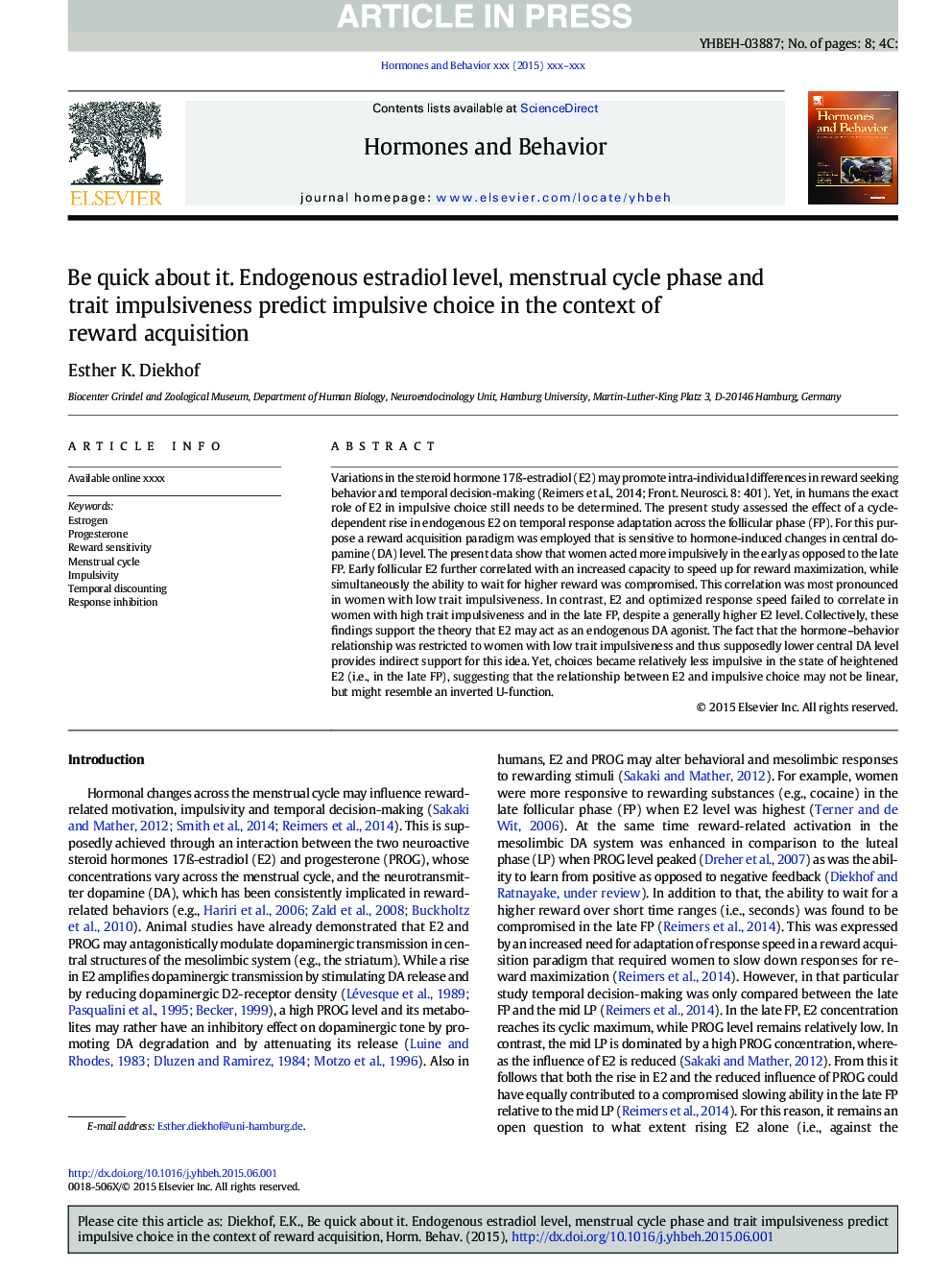| کد مقاله | کد نشریه | سال انتشار | مقاله انگلیسی | نسخه تمام متن |
|---|---|---|---|---|
| 6794800 | 540200 | 2015 | 8 صفحه PDF | دانلود رایگان |
عنوان انگلیسی مقاله ISI
Be quick about it. Endogenous estradiol level, menstrual cycle phase and trait impulsiveness predict impulsive choice in the context of reward acquisition
ترجمه فارسی عنوان
سریع در مورد آن سطح استروژن ادرار، فاز چرخه قاعدگی و تپش قلب بودن صفات، پیشگویی انتخاب تکانشی در زمینه دریافت پاداش را پیش بینی می کنند
دانلود مقاله + سفارش ترجمه
دانلود مقاله ISI انگلیسی
رایگان برای ایرانیان
کلمات کلیدی
استروژن، پروژسترون، حساسیت پاداش، چرخه قاعدگی، تکانشی، تخفیف موقتی، مهار پاسخ
موضوعات مرتبط
علوم زیستی و بیوفناوری
بیوشیمی، ژنتیک و زیست شناسی مولکولی
علوم غدد
چکیده انگلیسی
Variations in the steroid hormone 17Ã-estradiol (E2) may promote intra-individual differences in reward seeking behavior and temporal decision-making (Reimers et al., 2014; Front. Neurosci. 8: 401). Yet, in humans the exact role of E2 in impulsive choice still needs to be determined. The present study assessed the effect of a cycle-dependent rise in endogenous E2 on temporal response adaptation across the follicular phase (FP). For this purpose a reward acquisition paradigm was employed that is sensitive to hormone-induced changes in central dopamine (DA) level. The present data show that women acted more impulsively in the early as opposed to the late FP. Early follicular E2 further correlated with an increased capacity to speed up for reward maximization, while simultaneously the ability to wait for higher reward was compromised. This correlation was most pronounced in women with low trait impulsiveness. In contrast, E2 and optimized response speed failed to correlate in women with high trait impulsiveness and in the late FP, despite a generally higher E2 level. Collectively, these findings support the theory that E2 may act as an endogenous DA agonist. The fact that the hormone-behavior relationship was restricted to women with low trait impulsiveness and thus supposedly lower central DA level provides indirect support for this idea. Yet, choices became relatively less impulsive in the state of heightened E2 (i.e., in the late FP), suggesting that the relationship between E2 and impulsive choice may not be linear, but might resemble an inverted U-function.
ناشر
Database: Elsevier - ScienceDirect (ساینس دایرکت)
Journal: Hormones and Behavior - Volume 74, August 2015, Pages 186-193
Journal: Hormones and Behavior - Volume 74, August 2015, Pages 186-193
نویسندگان
Esther K. Diekhof,
